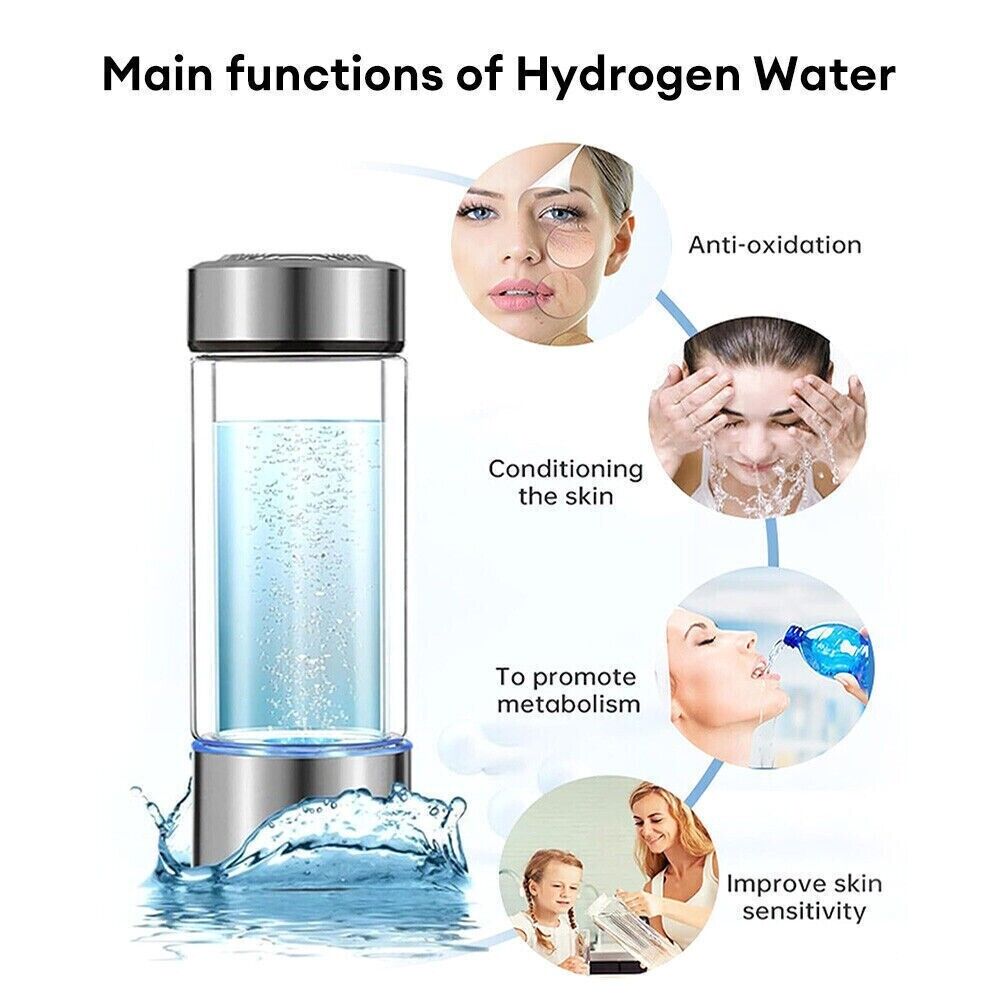Riechen Sie in Ihrem Badezimmer muffig? Sie suchen überall, können aber die Quelle nicht finden. Haben Sie daran gedacht, sich die Keramikfliesen im Duschbereich anzusehen? Wahrscheinlich sind auch direkt über dem Waschbecken und der Badewanne Fliesen. Vielleicht ist das ganze Badezimmer gefliest. In diesem Fall wurde die Fuge zwischen den Fliesen mit Mörtel abgedichtet.
Die meisten Duschkabinen sind mit Keramikfliesen ausgestattet, um zu verhindern, dass große Mengen Spritzwasser den Wandputz beschädigen. Obwohl Keramikfliesen eine wasserdichte und glasierte Oberfläche haben, ist Fugenmörtel leider weder glatt noch wasserdicht. Daher können sich Schimmel und Mehltau sehr leicht auf der Oberfläche von Fugenmörtel ansiedeln.
Warum wird Fliesenfugen schmutzig?
Duschfliesen werden viele, viele Male am Tag nass, besonders wenn Sie eine große Familie haben. Leider vergessen die Leute oder wissen gar nicht, dass es eine gute Idee ist, die Fliesen nach dem Duschen trocken zu wischen. Daher bleibt am Ende ein Wasserfilm am Mörtel haften und stagniert. Übrigens sollten Sie auch Reinigen Sie Ihre Glasduschtüren regelmäßig, um Trübungen und Flecken vorzubeugen.
Es ist eine Tatsache, dass mikroskopisch kleine Staubpartikel, Bakterien und Kalk sammeln sich auf den Oberflächen des Badezimmers. Sie werden dann zu einem Nährboden für Schimmel und Mehltau, die in warmen und feuchten Bedingungen wachsen.
Schauen Sie sich jetzt die Fugen in Ihrem Badezimmer an. Wenn Sie neben Schmutz auch schwarze Punkte oder Schlieren sehen, handelt es sich um eine florierende Kolonie von Schimmelsporen. Das Einzige, was Sie jetzt noch tun können, ist, sie loszuwerden. Aber zunächst: Sind sie für Ihre Familie gefährlich?
Sind Schimmel und Mehltau für den Menschen schädlich?
Schimmel und Mehltau Sporen leben überall und schweben ständig in der Luft. Sie fallen ständig auf Oberflächen und setzen sich ab, wenn die Bedingungen günstig sind. Die einzige Möglichkeit, das Wachstum der Sporen zu verhindern, besteht darin, Oberflächen regelmäßig mit Reinigungsmitteln auf Bleichmittelbasis zu reinigen. Dabei spielt es keine Rolle, ob der Reiniger auf Chlor- oder Wasserstoffperoxidbasis besteht, da beide Schimmel und Bakterien abtöten. Natürlich können Sie auch ein selbst gemacht Reinigungslösung – sie sind einfach herzustellen und sehr wirksam. Aber dazu kommen wir später.
Nun stellt sich die Frage: Sind die Sporen schädlich? Da sie ständig überall in der Luft sind, gewöhnen wir uns an sie und unser Immunsystem schafft es normalerweise, diese Eindringlinge abzuwehren.
Wenn wir jedoch anfällig für Atemprobleme oder Immunschwäche sind oder an Allergien wie Asthma leiden, reagieren wir sicherlich auf hohe Sporenkonzentrationen. Außerdem bieten hohe Schimmelkonzentrationen einen Nährboden für viele Arten von Bakterien – einige von ihnen können giftig sein oder Infektionen verursachen. Selbst wenn der Schimmel und die Bakterien nicht aktiv schädlich sind, entwickelt das Badezimmer einen abgestandenen, muffigen und sehr unangenehmen Geruch.
Deshalb sind wir es uns und unserer Familie schuldig, den Schimmel und Mehltau in unseren Duschkabinen zu entfernen.Sauberkeit ist immer eine gute Idee!
Dazu müssen wir jedoch wissen, wie wir unsere Duschfliesen effektiv reinigen. Also, wie reinigt man den Fugenmörtel der Duschfliesen?
Wie reinigen wir Fliesenfugen?
Es ist viel einfacher, schmutzigen Fugenmörtel im Anfangsstadium zu behandeln. Wenn Sie den Schmutz und Schimmel lange, lange Zeit nicht entfernen, wird der Mörtel fleckig und Sie werden ihn nie wieder vollständig sauber bekommen. In diesem Fall können Sie den alten Mörtel genauso gut aus den Fugen entfernen und sie mit neuem Mörtel auffüllen.
Gehen wir mal davon aus, dass Sie es frühzeitig erkannt haben, einverstanden?
Es empfiehlt sich, ein wirksames Haushaltsreinigungsmittel auf Bleichmittelbasis wie Cif zu verwenden. Dieses ist ideal zum Reinigen von Fliesen und Fugen! Alles, was Sie brauchen, ist eine Flasche Reiniger, eine Scheuerbürste oder eine alte Zahnbürste, einen Schwamm und ein sauberes Tuch.
-
Geben Sie die Reinigungsflüssigkeit auf die Bürste und schrubben Sie die Fugen, um sämtliche Schimmelspuren zu entfernen.
-
Spülen Sie die Fugen mit klarem Wasser aus dem Duschkopf ab und entfernen Sie hartnäckige Flecken mit einem Schwamm.
-
Trocknen Sie die Fliesen und Fugen mit einem sauberen, trockenen Tuch.

So erkennen Sie Schimmelsporen in den Fugen Ihrer Dusche
Wie reinigen wir Schimmel auf natürliche Weise aus Duschfugen?
Nicht jeder verwendet gern Produkte auf Bleichmittelbasis. Obwohl sie wahrscheinlich die beste Methode sind, um alle Spuren von Schimmel, Mehltau und Bakterien von den harten Oberflächen Ihres Hauses zu entfernen, lehnen viele Menschen die Verwendung von Chlorbleiche aus ökologischen Gründen ab. Diese Menschen müssen sich keine Sorgen machen!
Wasserstoffperoxid ist ein gutes Bleichmittel, das Sie in Apotheken kaufen können (fragen Sie nach Wasserstoffperoxid in Lebensmittelqualität). Es ist auch zum Sterilisieren erhältlich A Babyflaschen. „Milton“ ist ein beliebter Markenname, den Sie sich ansehen können. Die Flüssigkeit zersetzt sich in Sauerstoff und Wasser, die beide für sich genommen völlig harmlos sind. Und Wasserstoffperoxid hinterlässt keinen Chlorgeruch. Aus diesem Grund wird es häufig zum Desinfizieren von Oberflächen verwendet, bei denen Lebensmittel zubereitet werden.
Wenn Sie auch kein Wasserstoffperoxid verwenden möchten, können Sie es immer mit einer Mischung aus Essig und Backpulver (Natriumbicarbonat) versuchen.
Essig und Backpulver sind zwei traditionelle Reinigungsmittel, die wirksam sind und seit Hunderten von Jahren verwendet werden. Man sollte jedoch bedenken, dass die Mischung sehr abrasiv ist. Verwenden Sie sie nicht auf altem und losem Mörtel, denn am Ende bleibt möglicherweise nichts übrig!
Bitte beachten Sie, dass Sie bei der Verwendung von Essig und Backpulver, obwohl es sich um relativ harmlose Zutaten handelt, Ihre Augen, Ihren Mund und Ihre Haut schützen müssen. Nachdem Sie diesen Artikel gelesen haben, werden wir im nächsten Abschnitt alle Sicherheitsaspekte behandeln.
-
Mischen Sie Backpulver und weißen Essig in einer Schüssel, bis eine Paste entsteht.
-
Tauchen Sie eine alte Zahnbürste in die Paste und schrubben Sie jede Fuge nacheinander. Vergessen Sie nicht, die Borsten in jede Ritze zu bekommen.
-
Lassen Sie die Paste etwa 10 Minuten einwirken.
-
Mit klarem Wasser abspülen und mit einem feuchten Schwamm abreiben.
-
Trocknen Sie die Oberfläche.
Sie können auch Essig oder Backpulver verwenden, um Reinigen Sie Ihre verstopften Duschköpfe.
Wenn Sie mit der oben genannten Methode nicht zufrieden sind, haben wir eine andere für Sie! Dampf ist ein großartiges Mittel, um Schimmel abzutöten. Wenn Sie einen Dampfreiniger haben (den Sie günstig online kaufen können), können Sie bis zu 99 % aller Schimmelpilze und Bakterien abtöten. Sie können Dampf sogar auf Polstern und anderen Oberflächen verwenden. Schimmel verträgt die hohen Temperaturen von Dampf einfach nicht!
Kombinieren Sie Dampf mit einer Scheuerbürste und Sie können selbst die hartnäckigsten Schimmelkolonien entfernen. Außerdem müssen Sie sich mit einem Dampfreiniger keine Sorgen um Bleichmittelgeruch machen.
Passen Sie auf!
Denken Sie daran, dass Sie mit Reinigungsmitteln Lebewesen töten, selbst wenn es sich nur um Bakterien und Schimmel handelt. Auch Sie sind ein Lebewesen, daher werden Ihnen diese Reinigungsmittel in großen Konzentrationen oder über einen langen Zeitraum hinweg wahrscheinlich nicht viel nützen. Es ist wichtig, beim Umgang mit Reinigungsmitteln auf Ihre Sicherheit zu achten!
Wenn Sie Reinigungsmittel auf Bleichmittelbasis (wie etwa Chlor oder Wasserstoffperoxid) verwenden:
-
Denken Sie daran, Schutzhandschuhe aus Gummi zu tragen. Normale Spülhandschuhe reichen aus. Sie müssen Ihre Haut und Fingernägel schützen.
-
Sei vorsichtig und spritze das Bleichmittel nicht in deine Augen. Deine Augen werden nicht nur weh tun, Aber Sie können auch Ihr Sehvermögen irreparabel schädigen. Tragen Sie bei der Verwendung dieser Reinigungsmittel immer einen Augenschutz.
-
Sorgen Sie für eine ausreichende Belüftung des Arbeitsbereichs. Die Dämpfe können Ihre Lunge und alle anderen Schleimhäute, mit denen sie in Kontakt kommen, verätzen. Öffnen Sie ein Fenster oder eine Tür weit, bevor Sie mit der Arbeit beginnen.
-
Bewahren Sie diese aggressiven Reinigungsmittel stets außerhalb der Reichweite von Kindern auf.
Wenn Sie Essig und Backpulver verwenden:
-
Denken Sie daran, dass Essig und Backpulver nicht ungefährlich sein können, nur weil sie essbar sind. Essig (Essigsäure) ist ätzend, genau wie jede andere Säure. Wenn er mit Ihrer Haut oder einer Schleimhaut in Kontakt kommt, schädigt er Ihre Hautzellen. Tragen Sie Gummihandschuhe, sonst kann es zu Dermatitis oder anderen Hauterkrankungen kommen.
-
Natron ist alkalisch und ebenso ätzend wie Essig, daher ist auch hier Hautschutz wichtig.
-
Schützen Sie Ihre Augen vor versehentlichen Spritzern.
-
Essigdämpfe können auch Ihre Lunge und Schleimhäute schädigen. Sorgen Sie daher für eine gute Belüftung des Arbeitsbereichs.
-
Halten Sie Kinder fern.
Verwenden Sie niemals zwei Reinigungslösungen gleichzeitig. Wenn Sie feststellen, dass eine nicht so gut funktioniert wie sie sollte, spülen Sie den Bereich unbedingt ab (damit keine Spuren davon zurückbleiben), bevor Sie etwas anderes versuchen. Wenn Sie Essig und Bleichmittel oder Ammoniak und Bleichmittel mischen, entsteht ein giftiges Gas. Tun Sie das nicht!
Überprüfen Sie Ihren Mörtel regelmäßig
Abschließend möchten wir noch sagen, dass es wichtig ist, die Fugen in Ihrem Duschbereich zu reinigen, um einen frisch riechenden und makellos-aussehendes Badezimmer. Die Pflege der Fliesen und Fugen ist definitiv das Richtige. Dadurch werden nicht nur schlechte Gerüche und unansehnliche Flecken vermieden, sondern Ihre Badezimmerwände haben auch noch viele Jahre länger eine gute Lebensdauer, bevor Sie die Fliesen und Fugen ersetzen müssen.
Reinigen Sie außerdem regelmäßig Ihre Duschköpfe, Duschzubehör und Badezimmeroberflächen. Es ist wichtig, ein hygienisches Badezimmer zu haben – es ist gut für Ihre Gesundheit und gut für Auftritte!
Viel Spaß beim Putzen!
Wenn Sie Duschköpfe und Duschzubehör (Ersatzfilter, rutschfeste Duschmatten, Duschschläuche und Hartwasserfilter) kaufen möchten, dann gehen Sie zu den StoneStream-Website. Unsere EcoPower-Duschköpfe sind dafür bekannt, Wasser zu filtern und zu enthärten und schützen Ihre Haut, Haare und Badezimmeroberflächen vor Bakterien, Schimmel, Schmutz, Kalk und anderen unerwünschten Elementen!
Jetzt kaufen
-




